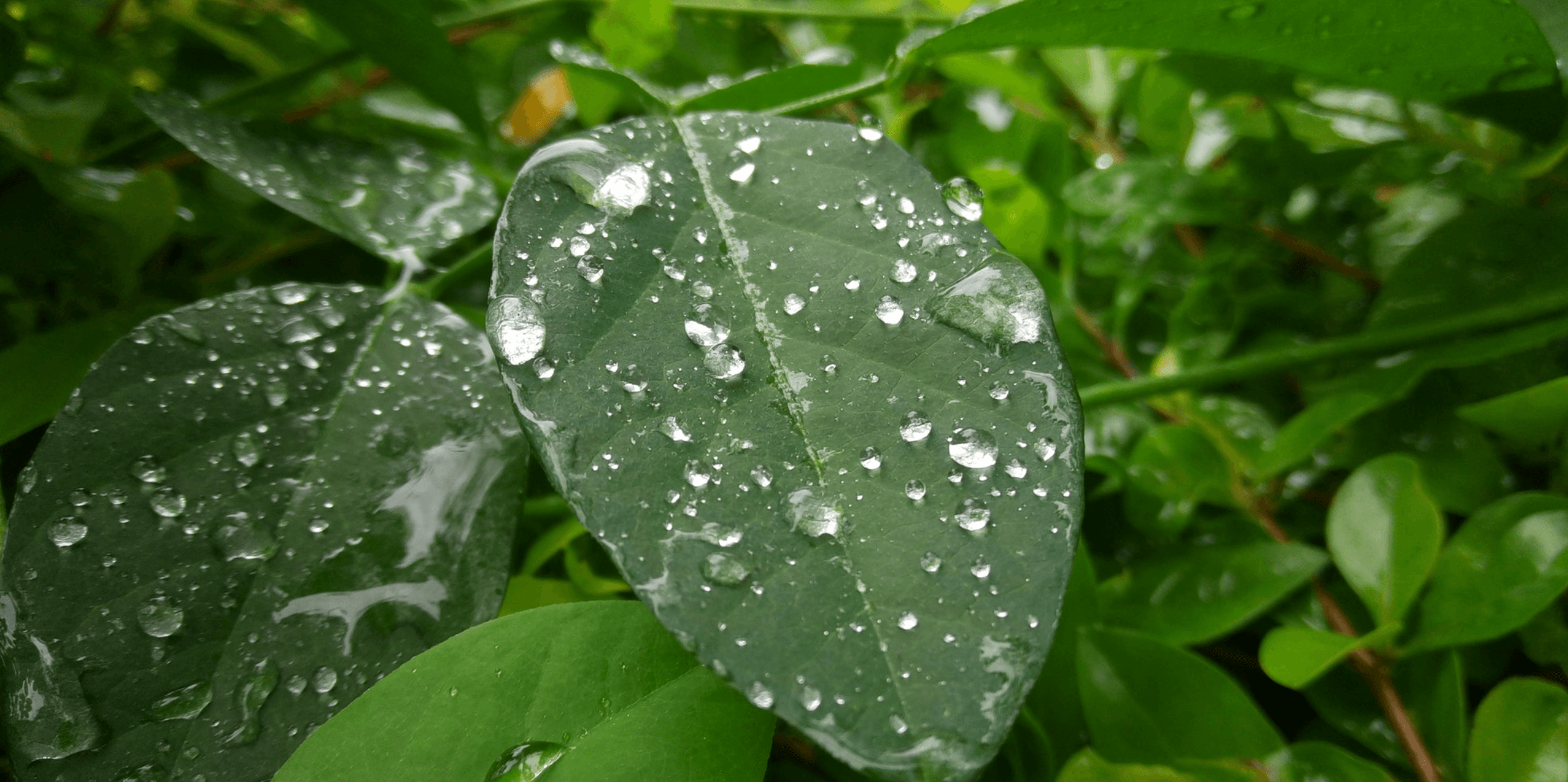What is a micro-climate?
Imagine opening an umbrella up on a sunny day. Standing beneath it shades you from direct sunlight, allowing you to appreciate the cool breeze and keeping you less dehydrated. The same concept applies when pastures of different leaf sizes and heights are grown on one field. They create shade, cooler temperatures, protection from strong wind and maintain moisture. In this blog I will explain how microclimate, created by multispecies, is beneficial to improving the water use efficiency (WUE) within a plant.
How does microclimate affect WUE within pasture plants?
Up to 99% of the water absorbed by roots is lost via transpiration through plant leaves.1
Every factor that affects the loss or retention of water in plants affects the efficiency with which the plants use water. One important way that plants use and lose water is by the process of transpiration. Transpiration is the movement of water through a plant and its evaporation from aerial parts, such as leaves, stems and flowers1. It is necessary for plants to transpire as the water is used for growth, metabolism and transport of minerals from the soil into the plant. Below, I briefly explained how microclimate created by multispecies ameliorates the effects of external factors to transpiration.
Temperature: Hot temperatures lead to plants’ need to transpire more in order to keep cool2. The frequent opening of the stomata leads to water movement from the soil, throughout the plant which is then released to the atmosphere. Colder temperatures cause the stomatal openings to be closed most of the time or open only slightly as the plant will be protecting itself from frost. When the field is filled with pastures of different canopy sizes and heights, a more stable, temperature climate is created right below the shade of pastures. That will lead to more water vapour being retained within the microclimate which will be reused once it returns to the soil as condensed water2.
Humidity: The humidity of the environment controls the rate at which plants transpire. When it is humid, plants transpire normally. When it is dry, plants transpire more. This occurs because of the process of osmosis as plants want to balance the moisture within and outside their dermal/outer cell walls. Multispecies pastures’ microclimates create a humid environment from the transpired water vapour keeping moisture for a long period and thus maintains efficient transpiration rates.
Sunlight: In the presence of sunlight, the stomata of the leaves open up2 for the plant to absorb carbon dioxide from the atmosphere in order to photosynthesise. When this process happens the plants lose a lot of water. A leaf canopy with a microclimate will keep the water in the surrounding area of the pastures, so even if the plants transpire more water, it will be kept around the environment whereby the water will be used again once it precipitates back into the soil.
For each molecule of CO2 that is being taken in by the stomata, the plant loses 400 molecules of H2O.1
Wind and air movement: Increased movement of air around a plant will result in a higher transpiration rate as the leaf’s boundary layer is smaller4. Too much wind blowing the leaves will dry up the surrounding area of the plants leading to increased transpiration rates. Pastures which have varying leaf sizes and shapes will cluster close to each other. This cluster creates a boundary, like a heavy blanket, that serves as a protector and anchor for pastures, keeping them from being heavily flipped and swept around by wind.
Soil-moisture availability: When moisture is lacking in the soil, plants can begin to senesce (premature aging, which can result in leaf loss) and transpire less water3. Alternatively when the soil is saturated with water, plants tend to adapt to that and will transpire more than is required. If a plant is then provided with constant and timely amounts of water during its growing period, the plant will transpire as a basic requirement, efficiently losing water that was used beneficially.
Conclusion
Water use efficiency within plants will improve when there is a constant microclimate in the field, which results in efficient transpiration rates by plants. Transpiration in plants is vital and needs to occur but careful attention needs to be placed on the fact that some external effects may speed its rate unnecessarily. And this blog has briefly outlined how that negative effect can be minimised by employing a multispecies pasture cropping system.
Sources
- Sterling, T.M. 2004. Transpiration – Water Movement through Plants. Department of Entomology, Plant Pathology and Weed Science New Mexico State University. http://croptechnology.unl.edu.
- Lawson, T. and Blatt, M.R. 2020. Stomatal size, speed, and responsiveness impact on photosynthesis and water use efficiency. Laboratory of plants physiology and biophysics, United Kingdom.
- Marlatt, W.E. 1961. The interactions of microclimate on plant cover, and soil moisture content affecting evapotranspiration rates. Atmospheric science technical. 23
- Managing the microclimate. The Brundtland Report, 1987. Practical note spate irrigation.
- https://commons.wikimedia.org/wiki/File:Wet_Leaves.jpg
- Measuring for irrigation efficiency - 2022-09-22
- Why does feed nutrition for dairy cows matter? - 2021-09-20
- Facing a drier future - 2021-05-12

